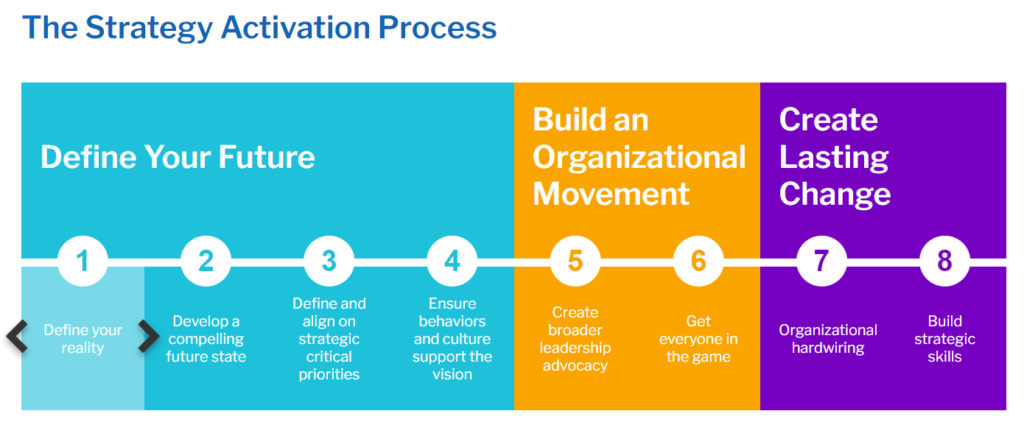All organizations have business processes that govern their activities and behaviors, and today’s organizations are constantly trying to transform. But if you ask organizations for the process that guides the way they manage the organization through transformational change to activate their new strategy, you may get blank stares.
Strategic change is a process, but it’s often managed as a series of independent events led by functions. It’s not the process itself but how it’s executed that leads to success or failure.
Principles to Activate Strategic Change
Organizations that win have some unwavering principles that guide the way they activate their strategies.
1) They drive collaboration, shared meaning, and shared ownership across functional boundaries while maintaining functional ownership and accountability.
Football players have a detailed playbook and practice plays countless times before they’re ever called in a game. They do this to make sure that every player understands how the play should be run and the type of adjustments they may need to make.
In business transformation, playbooks are often handed to functional leaders, and the next step is “game day” execution. Six to 12 months later, the Sales group and the Marketing group don’t look like they are on the same team! It becomes painfully obvious that these functions never had shared meaning on the why, what, and how of the desired future state.
Winning organizations allocate “practice” time, when functional leaders have rigorous debate and dialogue to form a clear and shared picture of the future. Then, when “audibles” are called during the transformation, they’re executed with a common mental model in mind.
2) They invest in capability building and coaching, where key leverage points exist to accelerate strategy activation, starting with the top leaders.
Change is difficult, and we often ask others to change before we are willing to change ourselves. Senior executives aren’t immune to this. They often chart a course for the company’s strategic future without considering how they need to adapt and grow. At the executive level, these capability shifts are often tied to observable behaviors. Because employees often model their leaders’ behaviors, leadership behaviors can serve either as an accelerant or delay to the change effort.
3) They shatter traditional hierarchies and enroll a larger group of leaders as advocates in the strategy.
In early stages, strategy and transformational change are usually very confidential. Only the top senior leaders plan the change, while everyone else is informed on a need-to-know basis. This usually causes the transformation to crumble under its own weight because the only advocates are the few who drafted the strategy. It’s time to squash this thinking! Winning organizations enroll a broad group of leaders – your loyal fan base – in the game plan early, so they can accelerate the pace of change within the organization.

The Path to Victory
Organizations that apply a process discipline and live by these principles greatly increase the odds of their transformation and strategy achieving its full intended potential (touchdown!).
Explore our Strategy Activation Process or send us a note if you’re curious to hear about it in practice: info@rootinc.com









